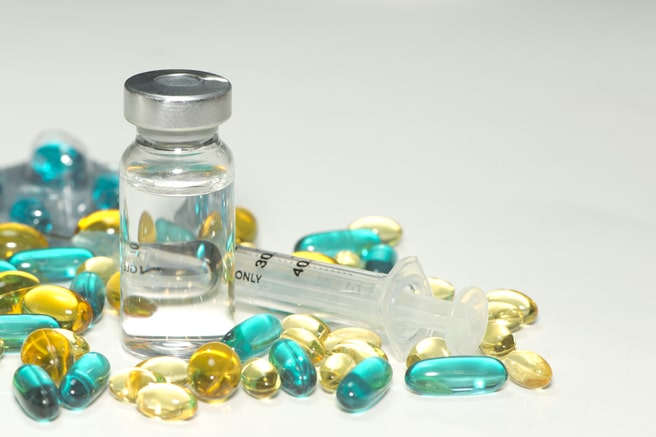B-12 HEALTH
A BETTER WAY TO WELLNESS
Welcome to B12Health
B-12 Health’s goal is to provide high-quality patient-focused care that is readily accessible, to our patients, their families and the community we serve. We firmly embrace your journey of achieving a better way to wellness, along with healthy habits, helpful advice, and tips to ensure you to stay well.
Jacksonville Beach • Tallahassee
• The Villages • Winter Haven
Walk-ins welcome!
The B12Health Difference
As a B12Health patient, we consider you an important part of our team.
Thank you for choosing us to help you on your better path to wellness!
The B12Health Difference
As a B12Health patient, we consider you an important part of our team. Thank you for choosing us to help you on your better path to wellness!
Experienced Doctors
Stability
Patient Care
Value
Professional & Friendly Staff
Convenience
Information
Walk-ins are welcome!
Click here to view locations.
Our Services
Vitamin B12 Injections
Vitamin B12 is a water-soluble vitamin known as cobalamin. This vitamin plays a vital role in brain function and the production of DNA and red blood cells. B12 can be stored in the liver for a long time, so it may take a few years for a deficiency to develop. B12 increases overall energy, mental clarity, and stamina for everyday task.
See Injection Pricing and Packages
Single B-12 injection – $20
Package of 4 B-12 injections – $64 (Save 20%)
Package of 8 B-12 injections – $112 (Save 30%)
Package of 12 B-12 injections – $144 (Save 40%)
Vitamin C Injections
Vitamin C is not manufactured by the body, but it’s essential to your health. Studies suggest that vitamin C may be an effective remedy for the common cold. In general, people who take vitamin C supplements have slightly shorter periods of cold symptoms or somewhat milder symptoms.
See Injection Pricing and Packages
Single Vitamin C injection – $20
Package of 4 Vitamin C injections – $64 (Save 20%)
Package of 8 Vitamin C injections – $112 (Save 30%)
Package of 12 Vitamin C injections – $144 (Save 40%)
Vitamin D3 Injections
Vitamin D3 Injection is a fat-soluble vitamin that plays a role in many important body functions. It is best known for working with calcium in your body to help build and maintain strong bones. Vitamin D3 can be taken as a supplement to improve overall health.
See Injection Pricing and Packages
Single Vitamin D3 Injection – $30
Package of 4 Vitamin D3 injections – $96
Package of 8 Vitamin D3 injections – $168
Package of 12 Vitamin D3 injections – $216
Glutathione Injections
Glutathione is the mother of antioxidants made in the body’s cells. Decreased levels can result from aging, stress, and exposure to toxins. Boosting glutathione may provide many health benefits, including reduction of oxidative stress. Glutathione is involved in many processes in the body, including tissue building and repair, the making of chemicals and proteins needed, and the function of the immune system.
See Injection Pricing and Packages
Single Glutathione Injection – $60
Package of 4 Glutathione injections – $216
Package of 8 Glutathione injections – $384
Package of 12 Glutathione injections – $504
Lipotropic Injections
Lipotropic injections—also called lipo injections, or lipotropic B12 injections—are a combination of ingredients administered by needle injection to increase fat metabolism and boost overall wellness. These injections are often used by people trying to lose weight.
See Injection Pricing and Packages
Single Lipotropic Injection – $25
Package of 4 Lipotropic injections – $80
Package of 8 Lipotropic injections – $140
Package of 12 Lipotropic injections – $180
Super Lipotropic Injections (Fat Burning)
If you are interested in improving your weight loss journey in a healthy and efficient way, then Super Lipo injections may be for you. Super Lipo injections are designed to increase your energy and facilitate fat burn by stimulating liver function, boosting metabolism, and delivering antioxidants that help the body break down fat cells more quickly.
See Injection Pricing and Packages
Single Super Lipotropic Injection – $35
Package of 4 Super Lipotropic injections – $112
Package of 8 Super Lipotropic injections – $196
Package of 12 Super Lipotropic injections – $252
Extreme Lipotropic Injections (Fat Burning)
This injection helps to stimulate the breakdown of fat during metabolism. It can also improve heart health, improve the immune system, and correct hormone imbalances
See Injection Pricing and Packages
Single Extreme Lipotropic Injection – $45
Package of 4 Extreme Lipotropic injections – $144
Package of 8 Extreme Lipotropic injections – $252
Package of 12 Extreme Lipotropic injections – $324

